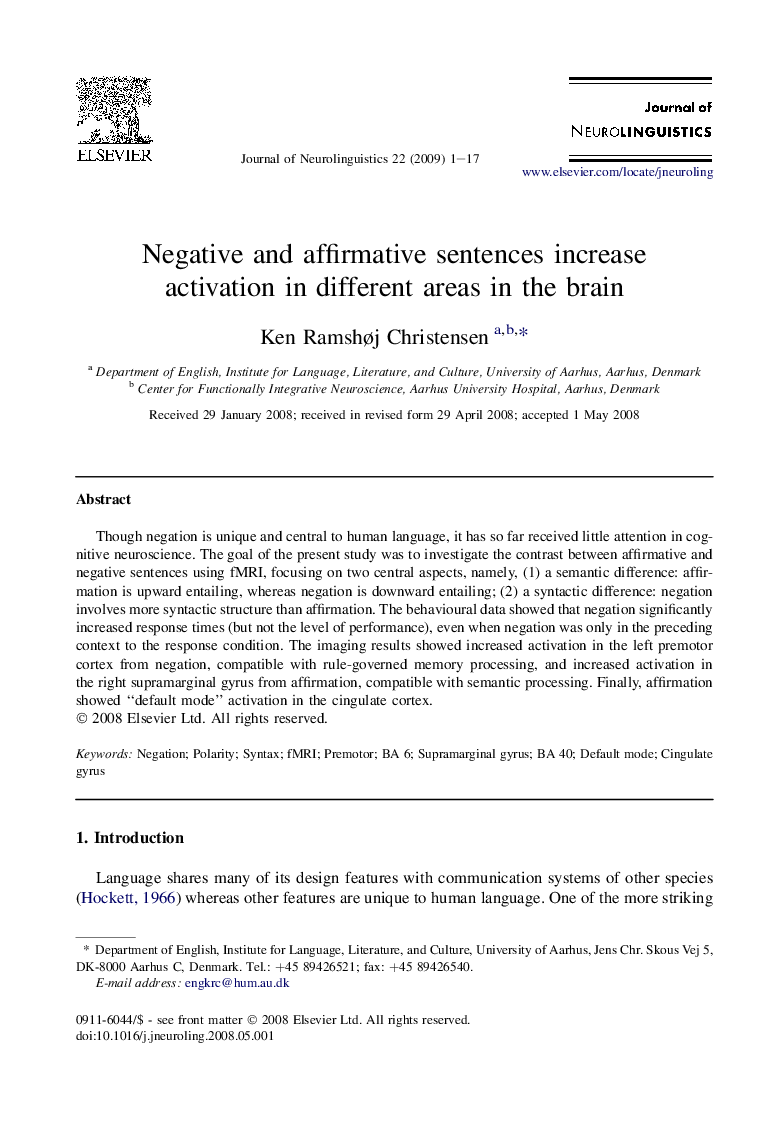| Article ID | Journal | Published Year | Pages | File Type |
|---|---|---|---|---|
| 912071 | Journal of Neurolinguistics | 2009 | 17 Pages |
Though negation is unique and central to human language, it has so far received little attention in cognitive neuroscience. The goal of the present study was to investigate the contrast between affirmative and negative sentences using fMRI, focusing on two central aspects, namely, (1) a semantic difference: affirmation is upward entailing, whereas negation is downward entailing; (2) a syntactic difference: negation involves more syntactic structure than affirmation. The behavioural data showed that negation significantly increased response times (but not the level of performance), even when negation was only in the preceding context to the response condition. The imaging results showed increased activation in the left premotor cortex from negation, compatible with rule-governed memory processing, and increased activation in the right supramarginal gyrus from affirmation, compatible with semantic processing. Finally, affirmation showed “default mode” activation in the cingulate cortex.
